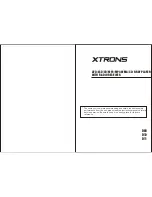
&
User
AN-80i
Manual
70-00072-01-08b
Proprietary Redline Communications © 2009
Page 39 of 128
June 4, 2009
Important
: EIRP Levels: Where required by local regulations, the maximum
operational power per channel for a specific antenna must not exceed the maximum
allowable EIRP levels. Refer to the FCC and CE notices in this manual. The RF output
power settings must be professionally programmed by the manufacturer or a trained
professional installer. See section 8:
Appendices
for a list the maximum transmit
power setting based on the antenna gain for a series of frequency settings.
DFS Action
: Select the mode of operation for DFS.
The system set to PTP Master monitors for interference from radar devices and other
equipment using the same channel frequency. When interference is detected, the
system automatically takes the action selected using the drop-down menu.
Important
:
Where DFS is required by regional regulations, this feature is permanently
enabled at the factory and can not be disabled by the installer or end-user.
None
: The DFS function is disabled.
Tx Off
: When radar signals are detected the transmitter is switched off for 30
minutes. This action is recorded in the message log and an SNMP trap message is
sent (if SNMP enabled). Following an interval of thirty minutes, the same channel is
monitored for one minute and if there are no DFS triggering events, the system
resumes normal operation. If DFS trigger conditions are still detected, operation is
suspended for an additional thirty minute period.
Chg Freq
: When radar signals are detected the transmitter is switched to a different
frequency. This action is recorded in the message log and a trap message is sent (if
SNMP enabled). A new channel is selected based on allowable frequencies for the
regulatory region (set by Options Keys). The new channel is monitored for a period
of one minute before the system is allowed to transmit. If DFS triggering events are
detected, the next available channel is selected and monitored. The system is not
allowed to return to a channel on which DFS trigger events were detected for a
period of thirty minutes. If DFS trigger events are detected on all channels, operation
is suspended until the thirty-minute time interval expires for at least one channel.
Antenna Gain
: Enter the gain (dBm) for the system antenna.
It is important to enter the correct (actual) antenna gain. If the gain is set higher, the
system is less sensitive to detecting interference, and is not operating in compliance with
the UK/ETSI standard. If the gain is set low, the system is more sensitive to interference
and may experience false DFS triggers.
ATPC Enable
: Check this box to enable the AN-80i to monitor the received signal
and request that the remote system adjustment its transmit level for optimum
performance. The ATPC feature must be enabled on both units.
Important
: When ATPC is enabled, use adaptive modulation for best results.
Adaptive Modulation
: Check this box to enable the AN-80i adaptive modulation.
When adaptive modulation is disabled, the UBR must be entered manually using the
Uncoded Burst Rate setting.
When enabled, the modulation/coding is automatically set to achieve the highest UBR
where packet error rates are lower than 1x10e-6. Higher packet error rates cause the
system to reduce modulation/code rate to maintain the wireless link quality (e.g., change
from 16 QAM 3/4 to 16 QAM 1/2). The maximum UBR is limited to the Uncoded
Burst
Rate setting (v3.00 or higher).
Modulation Reduction Level
: Enter the number of modulation/coding levels to step
down during re-transmission of wireless packets. Each step down lowers the UBR (e.g.,
















































